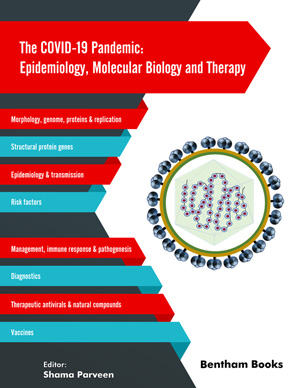Abstract
Research scientists across the globe are attempting to unearth the possible therapeutic agents against Coronavirus disease 2019 (COVID-19). The natural compounds from plant sources constitute a rich source of potential antiviral, antibacterial, antioxidant, anticancer, immune enhancer and other activities with minimal side effects. Approximately 25% of the European Medical Agency (EMA) or Food and Drug Administration (FDA) approved drugs are based on plant products highlighting their importance in the medical field. In recent years, in-silico methods have provided fast and cost-efficient approaches for designing potential inhibitors. Several virtual screening, molecular simulation, pharmacokinetics and druggability studies have been carried out to identify potential inhibitors against structural (spike, envelope, and membrane) and non-structural (Protease, RdRp, endoribonucleoase) proteins of SARS-CoV-2. In the present chapter, we have reviewed all such studies that recommended naturally occurring bioactive compounds (flavonoids, terpenes, curcuminoids, tannins, essential oil etc.) of plant origin as potential inhibitors of COVID-19. We have listed 100 such potential compounds and have analyzed significance of some of these (Myricitrin, Baicalin, Hesperidin, Theaflavin, Apigenin, Isothymol, Saikosaponin U, Curcumin, Tannin etc.) in detail based on computational studies. Furthermore, we have also studied several medicinal plants (Curcuma longa, Vitis vinifera, Glycyrrhiza glabra, Malus domestica, Azadirachta indica, Camellia sinensis and Nigella sativa). These plants are part of normal human diet and can also be considered as potential herbs with immune system enhancing effects. In addition, these phytoconstituents should be further analyzed in detail for toxicity, pharmacokinetics, antiviral and therapeutic potential in cell culture and animal models against SARS-CoV-2.
Keywords: Curcuminoids, Flavonoids, Natural compounds, Plants, SARS-CoV-2, Terpenes, Therapeutics.






















